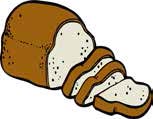Links to the Atlantic Canada Family Studies Curriculum Outcomes:
- GCO: Students will be expected to demonstrate an understanding of their personal responsibility in making healthy food choices.
- GCO: Students will be expected to demonstrate an understanding of their personal responsibility in food preparation.
Brief Overview of the Lesson:
After a brief discussion about Canada’s Food Guide recommendations, the students will be asked to plan three healthy meals for a day. They will estimate the cost of each meal. As each group shares their meal plans with the class, the teacher will record the various costs of each group’s meals. A discussion will follow about why one meal costs less than another.
Estimated Time Required for Implementation:
One period
Materials Needed:
Chart paper, marker, copies of Canada’s Food Guide Servings and Daily Recommendations (provided)
Suggested Implementation Strategy:
- Begin by asking the class what are the four food groups.
- Ask if they know how many servings of each group Canada’s Food Guide recommends for a teenager each day.
- Divide the students into groups of 4-5 and hand out a copy of the Food Guide provided to each group.
- Explain how to use the guide and then ask each group to use the guide to plan three healthy meals – breakfast, lunch, and dinner. They are to estimate the cost of each meal.
- Each group will share their meal plans while the teacher records on chart paper the estimated costs of each meal.
- Lead a discussion about why one meal cost less than another – for example, the group chose to drink water instead of juice, they chose to have beans for dinner instead of meat, they chose a piece of fruit for dessert rather than cookies, etc.
Evaluation:
- Ask the each group to give at least one suggestion of how they could change their meal plan in order to make it healthy and/or cheaper.
- Ask the class what they learned about saving money while eating healthy.
Possible Links to the Home Program:
- Shopping List – Activities: Local – Ages 11-13
- Teens Plan a Meal – Activities: Local – Ages 14-16
Extended Learning Opportunities:
- Go to the grocery store, purchase the foods needed for one of the meals, and tally up the actual cost of the meal.
- Chose one of the meals, and have the class prepare the meal.
Articles:
CANADA’S FOOD GUIDE: DAILY SERVINGS and RECOMMENDATIONS
Examples of one Food Guide Serving/Recommended Number of Servings for Teens per Day
Vegetables and Fruit 7

- 125 mL (½ cup) fresh, frozen or canned
vegetable or fruit or 100% juice
- 250 mL (1 cup) leafy raw vegetables or
salad
- 1 piece of fruit
Grain Products 6

- 1 slice (35 g) bread or ½ bagel (45 g)
- ½ pita (35 g) or ½ tortilla (35 g)
- 125 mL (½ cup) cooked rice, pasta, or couscous
- 30 g cold cereal or 175 mL (¾ cup) hot cereal
- ½ muffin, 2 cookies, 10 crackers (35 g)
Milk and Alternatives 3-4

- 250 mL (1 cup) milk or fortified soy beverage
- 175 g (¾ cup) yogurt
- 200 mL yogurt drinks
- 50 g (1 ½ oz.) cheese
- 125 mL, ½ cup pudding/custard (made with milk)
Meat and Alternatives 2-3

- 125 mL (½ cup) cooked fish, shellfish, poultry or lean meat
- 175 mL (¾ cup) cooked beans
- 2 eggs
- 30 mL (2 Tbsp) peanut butter
- 60 mL, ¼ cup nuts, shelled
- 175 mL, ¾ cup lentils
- 175 mL, ¾ cup tofu
Choosing Beverages
- Children 13 years and older should drink 8 to 10 glasses (2 litres) of water each day, especially when exercising or on a hot day.
- Milk, fortified soy beverages and 100% juice are also healthy options.
- Some beverages may contain caffeine. Caffeine is a stimulant that affects children more than adults due to their smaller body weights. Caffeine is found in coffee, tea, colas, and some energy drinks.
- Limit intake of soft drinks, sports drinks, energy drinks, fruit drinks, punches, sweetened hot and cold beverages and alcohol. These beverages can be high in calories and low in nutrients.




